Previous
Next
Chenopodium Quinoa
Quinoa (Chenopodium quinoa) is an Andean food consumed since pre-Hispanic cultures. It originated about 5,000 years ago in the Andean region of Peru and Bolivia. Noe it is cultivated in the highlands of Peru.
Quinoa contains protein, it also provides many vital minerals for a healthy diet. It is very rich in magnesium; just one cup has about 30% of the recommended daily amount. Potassium, zinc and iron are also present in this grain. Quinoa does not contain gluten, it is rich in protein, fiber, folic acid, iron, zinc, magnesium, phosphorus and manganese.

Functionality
This magnificent superfood is well known for its macronutrients, essential amino acids, and complex carbohydrates. It is also high in micronutrients, including Omega 3 and 6, minerals (potassium, magnesium, phosphorous and zinc) and vitamins (B complex and vitamin E).
It is an easily digestible food, recommended for celiacs, diabetics and for those who are lactose intolerant. Due to its nutritional characteristics, it is a great substitute of meat or milk.
Benefits
- Beneficial for maintaining lower levels of bad cholesterol.
- Protects against chronic diseases and cancer.
- Helps to lose weight and control diabetes.
- Prevents the development of cataracts and delays the appearance of macular degeneration.
- Boosts the immune system and helps to detoxify the body.
- Maintains optimal liver, kidney and heart health.
- Reduces the risk of atherosclerosis and coronary heart disease.

Suggested use
Quinoa is used in vegetable salads, veggie burgers, stews, and soups. It can also be consumed directly as it is in nutritional juices or shakes, snacks, granola and cookies.
Presentations

Location


